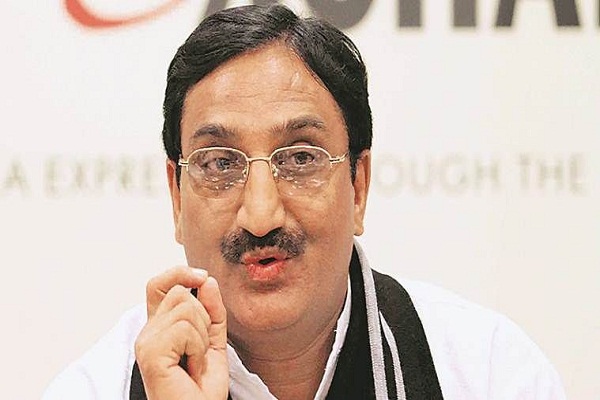
India’s education sector is undergoing a profound transformation, and at the heart of this change are the Tier 2 and Tier 3 cities that are reshaping the landscape of primary education. For decades, quality education was largely concentrated in metropolitan hubs, leaving smaller towns struggling with limited access, infrastructure challenges, and a lack of exposure. However, the narrative is rapidly changing. Today, these cities are not only catching up but also emerging as growth engines in primary education driving inclusivity, accessibility, and innovation.
A Shift Beyond Metros
India’s metros have long been the center of elite schools and progressive learning methodologies. Yet, with rising population density, escalating costs, and migration pressures, there has been a growing realization that sustainable education growth lies in empowering smaller towns. Tier 2 and Tier 3 cities, home to nearly 70% of India’s population, have become focal points of this shift.
Parents in these cities are increasingly aspirational, recognising education as the most powerful tool for upward mobility. This has created strong demand for quality schools, affordable private institutions, and new-age digital learning models. Schools, policymakers, and edtech companies are now channeling investments and resources into these regions, resulting in remarkable improvements in learning outcomes.
Infrastructure and Access: Closing the Gap
One of the most visible transformations in Tier 2 and Tier 3 cities is the rise in modern school infrastructure. From smart classrooms and digital labs to activity-based learning spaces, smaller towns are no longer synonymous with outdated facilities. Affordable private schools are ensuring that even middle-income families can access structured and holistic learning environments.
Simultaneously, government-led initiatives under the National Education Policy (NEP) 2020 have accelerated progress. Programs like Samagra Shiksha and increased digital content delivery have enabled schools in non-metro regions to integrate technology into the classroom. This has bridged gaps not just in access but also in the quality of education, leveling the playing field for children outside urban centers.
The Role of Technology
Perhaps the biggest catalyst for this transformation has been technology. Affordable internet connectivity and smartphone penetration have democratized access to digital learning platforms. Edtech companies that once focused primarily on metros are now tailoring their offerings for Tier 2 and 3 students offering bilingual content, low-cost subscriptions, and curriculum-linked tools.
Digital classrooms, online assessments, and AI-driven personalised learning are enabling schools in these regions to compete with their metropolitan counterparts. Moreover, hybrid models where traditional classrooms are supported by digital resources are ensuring that learning remains consistent and effective, even in remote areas.
Empowering Teachers and Communities
The growth of primary education in smaller towns is also fueled by the empowerment of teachers. Continuous teacher training programs, online workshops, and government-backed digital teaching modules are equipping educators with the skills needed to adopt modern pedagogies.
In addition, community participation is stronger in Tier 2 and Tier 3 regions. Parents, local bodies, and educators work closely to ensure accountability and encourage children to pursue education as a priority. This collective ownership has strengthened trust in the education system, ensuring higher enrollment and retention rates in schools.
A Push Towards Inclusivity
Tier 2 and 3 cities are also playing a vital role in making education more inclusive. Many schools in these regions are adopting flexible fee structures and offering scholarships to ensure that financial constraints do not prevent children from accessing quality education.
Importantly, the presence of affordable institutions reduces the need for families to migrate to larger cities solely for their children’s education. This not only keeps family units together but also reduces pressure on metropolitan infrastructure.
Also Read: Beyond the Blueprint Reimagining Education for a Sustainable, Intelligent Future
Building Future-Ready Learners
The ultimate goal of expanding quality primary education is to prepare children for the future. Schools in Tier 2 and Tier 3 cities are increasingly emphasizing holistic development integrating STEM education, extra-curricular activities, and soft skills alongside traditional subjects. The exposure to new-age skills at a young age ensures that students from smaller towns can compete with their metropolitan peers in higher education and career opportunities.
The Road Ahead
The rise of Tier 2 and Tier 3 cities in India’s primary education growth is more than just a trend, it is a structural shift that promises long-term impact. To sustain this momentum, stakeholders must focus on three key areas:
Continued investment in digital infrastructure to ensure uninterrupted access to learning.
Robust teacher training to strengthen delivery in line with modern methodologies.
Inclusive policies and partnerships between government, private sector, and communities to ensure that education remains both affordable and aspirational.
As India strives to become a knowledge-driven economy, the foundation must be laid in its schools. And increasingly, it is in Tier 2 and Tier 3 cities where this foundation is being strengthened. By bridging the education divide, these cities are not just empowering their children, they are reshaping the future of India.
Views expressed by Pritam Kumar Agarwal, Founder – Hello Kids Chain of Preschools & Riverstone Schools; Vice President – ECA (Early Childhood Association India), Karnataka



























